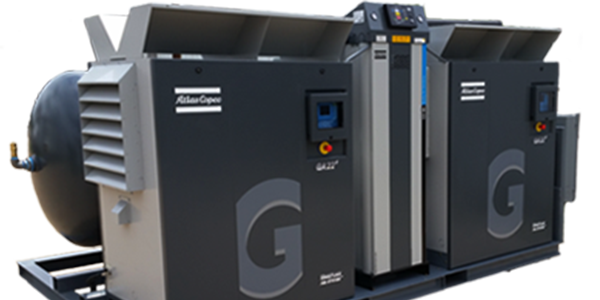A Dual Compressor Skid Arrangement is an engineered system designed to house two compressors, often used in various industries to manage gases or air pressure, typically for large-scale operations such as in the oil and gas, petrochemical, refrigeration, and manufacturing sectors. This arrangement improves efficiency, reliability, and flexibility by enabling two compressors to work together, either in parallel or sequentially, depending on operational needs. The skid itself is a modular platform that contains all necessary components, making it easy to transport, install, and maintain.
Components of a Dual Compressor Skid Arrangement
1. Compressors: The heart of the system is the two compressors, which may be of different types (reciprocating, screw, or centrifugal) based on the application’s needs. Each compressor serves the purpose of increasing the pressure of a gas by reducing its volume. The use of dual compressors provides redundancy, ensuring that operations can continue even if one unit fails or needs maintenance.
2. Skid: The skid is a robust frame or platform that holds the entire system together. It typically includes compressors, piping, electrical systems, control panels, and auxiliary equipment. The skid is designed to be easily transported as a single unit, allowing for quicker installation and commissioning. The modular nature of the skid also allows for expansion and easy integration into existing systems.
3. Piping and Valves: The piping system in a dual compressor skid is crucial for routing the gas or air through the compressors and other components. Valves are strategically placed to control the flow of gases and can be used to isolate each compressor when necessary. The piping and valves must be designed to withstand the high pressures generated by the compressors.
4. Control System: The control panel manages the operation of both compressors and other auxiliary systems. Modern systems often use programmable logic controllers (PLCs) or distributed control systems (DCS) to automate operations, optimize performance, and monitor key parameters such as pressure, temperature, and flow rates. The control system also ensures that the compressors operate in a coordinated manner, preventing overload and maximizing efficiency.
5. Coolers and Heat Exchangers: Compressing gases generates a significant amount of heat. To ensure efficient operation and prevent damage to the compressors and other components, cooling systems are incorporated into the skid arrangement. These may include coolers, heat exchangers, or intercoolers to manage the heat generated during compression.
6. Lubrication System: Compressors typically require lubrication to reduce friction and wear on moving parts. The lubrication system, often integrated into the skid, ensures that the compressors operate smoothly and efficiently. Some systems may have oil separators to prevent oil from contaminating the gas being compressed.
7. Instrumentation: A range of sensors and gauges are used to monitor the operation of the compressors and associated systems. These instruments track parameters such as pressure, temperature, flow rate, and oil levels, providing real-time data to the control system and operators. Alarms and shutdown mechanisms are also in place to prevent damage in the event of system malfunctions.
Benefits of Dual Compressor Skid Arrangements
1. Redundancy: One of the primary benefits of a dual compressor skid arrangement is redundancy. By having two compressors in the same system, operations can continue even if one compressor goes offline for maintenance or due to a failure. This is particularly important in industries where downtime can be costly or dangerous.
2. Operational Flexibility: The dual compressor system provides flexibility in operation. For instance, the compressors can be run in parallel for higher capacity or sequentially to achieve different pressure levels. This adaptability is useful in industries where demand fluctuates or where different stages of compression are required.
3. Increased Efficiency: A well-designed dual compressor skid arrangement can optimize energy consumption by running compressors in stages or by using variable-speed drives. This not only reduces operational costs but also minimizes wear and tear on the compressors, extending their lifespan.
4. Ease of Maintenance: The skid arrangement simplifies maintenance by consolidating all components into a single, easily accessible platform. Maintenance personnel can access the compressors, valves, and other components without disassembling complex piping systems. Furthermore, the modular nature of the skid allows for quick replacement or upgrade of individual components.
5. Compact and Transportable Design: The skid-mounted arrangement is typically more compact than traditional installations, which require separate infrastructure for each component. The skid can be pre-assembled and tested before being delivered to the site, reducing installation time and costs. Its transportability also allows for relocation if necessary, providing operational flexibility.
6. Improved Safety: Integrated control systems with alarms and shutdown mechanisms enhance the safety of the dual compressor skid arrangement. Operators can monitor the system remotely and respond to any issues quickly. In industries dealing with hazardous gases or high-pressure systems, these safety features are crucial.
Applications
Dual compressor skid arrangements are widely used in industries where the reliable and efficient handling of gases is critical. Some common applications include:
– Oil and Gas: For gas gathering, processing, and transport.
– Petrochemical: Compressing gases for chemical reactions and storage.
– Refrigeration: In large-scale industrial refrigeration systems.
– Manufacturing: Providing compressed air or gas for various production processes.
The dual compressor skid arrangement offers a versatile, efficient, and reliable solution for industries requiring gas compression. With its modular design, ease of maintenance, operational flexibility, and built-in redundancy, it is a preferred choice for many industrial applications.

